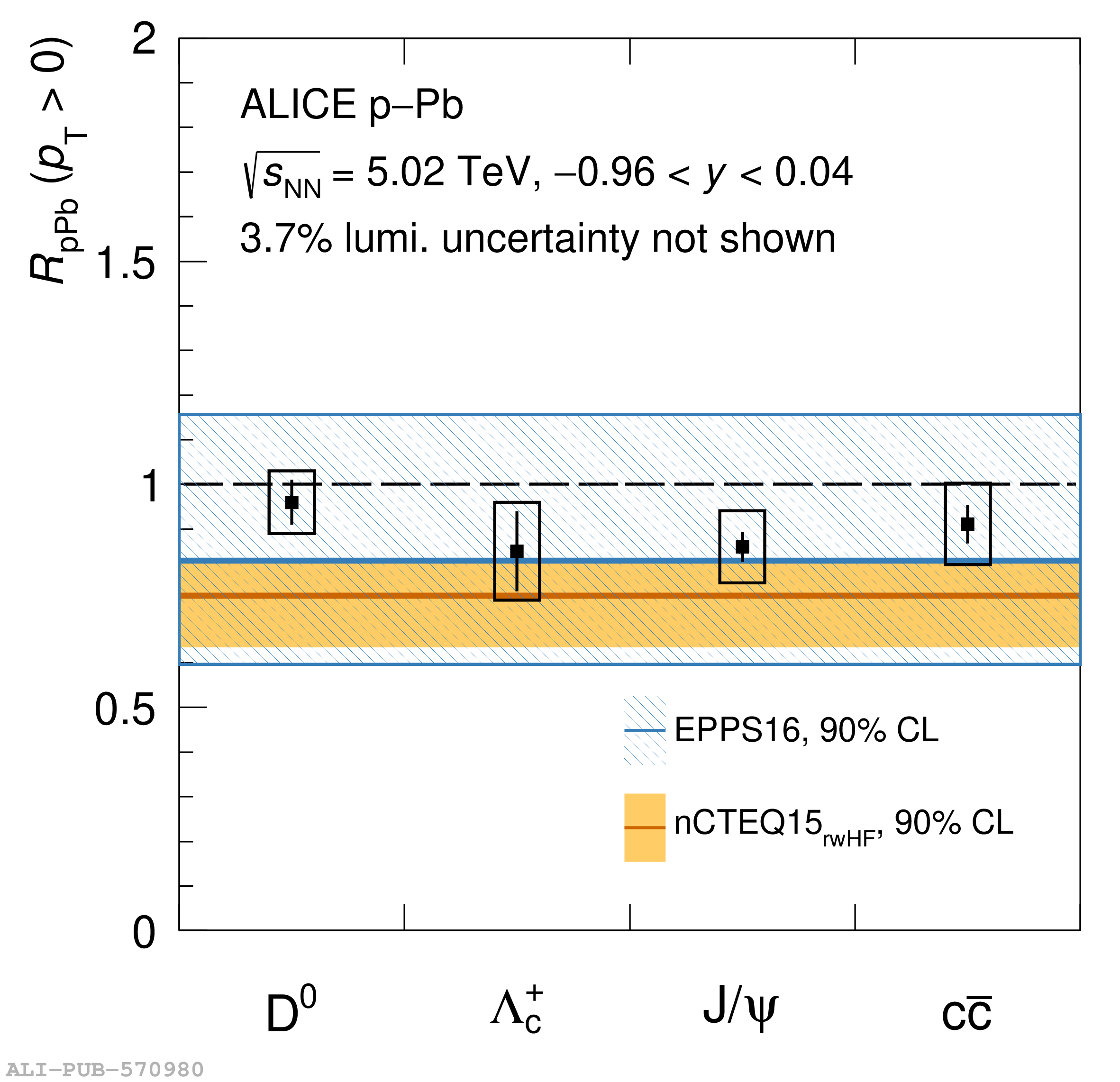The total charm-quark production cross section per unit of rapidity $\mathrm{d}\sigma({\rm c\overline{c}})/\mathrm{d}y$, and the fragmentation fractions of charm quarks to different charm-hadron species $f(\mathrm{c}\rightarrow {\rm h_{c}})$, are measured for the first time in p–Pb collisions at $\sqrt{s_\mathrm{NN}} = 5.02$ TeV at midrapidity ($-0.96<~y<~0.04$ in the centre-of-mass frame) using data collected by ALICE at the CERN LHC. The results are obtained based on all the available measurements of prompt production of ground-state charm-hadron species: $\mathrm{D}^{0}$, $\mathrm{D}^{+}$, $\mathrm{D}_\mathrm{s}^{+}$, and $\mathrm{J/\psi}$ mesons, and $\Lambda_\mathrm{c}^{+}$ and $\Xi_{\rm c}^{0}$ baryons. The resulting cross section is $\mathrm{d}\sigma({\rm c\overline{c}})/\mathrm{d}y =219.6 \pm 6.3\;(\mathrm{stat.}) {\;}_{-11.8}^{+10.5}\;(\mathrm{syst.}) {\;}_{-2.9}^{+8.3}\;(\mathrm{extr.})\pm 5.4\;(\mathrm{BR})\pm 4.6\;(\mathrm{lumi.}) \pm 19.5\;(\text{rapidity shape})+15.0\;(\Omega_{\rm c}^{0})$ mb, which is consistent with a binary scaling of pQCD calculations from pp collisions. The measured fragmentation fractions are compatible with those measured in pp collisions at $\sqrt{s} = 5.02$ and $13$ TeV, showing an increase in the relative production rates of charm baryons with respect to charm mesons in pp and p–Pb collisions compared with $\mathrm{e^{+}e^{-}}$ and $\mathrm{e^{-}p}$ collisions. The $p_\mathrm{T}$-integrated nuclear modification factor of charm quarks, $R_\mathrm{pPb}({\rm c\overline{c}})= 0.91 \pm 0.04\;{\rm (stat.)}{}^{+0.08}_{-0.09}\;{\rm (syst.)}{}^{+0.05}_{-0.03}\;{\rm (extr.)}{}\pm 0.03\;{\rm (lumi.)}$, is found to be consistent with unity and with theoretical predictions including nuclear modifications of the parton distribution functions.
Eur. Phys. J. C 84 (2024) 1286
HEP Data
e-Print: arXiv:2405.14571 | PDF | inSPIRE
CERN-EP-2024-141
Figure group



